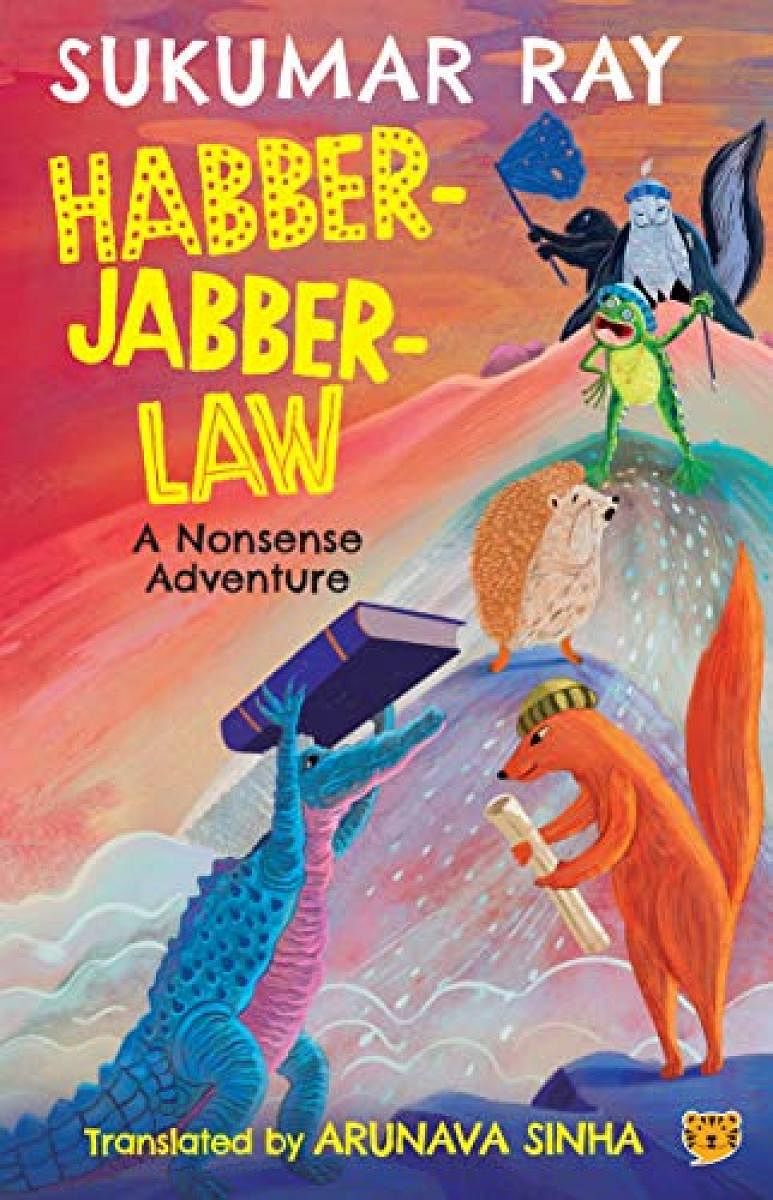
Imagine looking for your handkerchief one sunny afternoon, only to find in its place a fairly chatty cat, laughing at your limited knowledge of the alphabet. Thus begins the adventure of Habber Jabber Law’s bewildered and often frustrated narrator. We soon learn that feline mockery was but a short-lived concern for the eight-years-and-three-months-old boy, as a raven arrives, caught up in a world of accounting that is simply beyond comprehension. The tale only grows stranger from this point on with the appearance of more unexpected characters and their implausible stories.
An English translation of a beloved Sukumar Ray classic, this latest publication from Speaking Tiger comes nearly a century after the original. Published in 1921 in Bengali, Ray’s HaJaBaRaLa has long been hailed as a timeless nonsense tale for children. Its clever use of language and whimsical storyline made the book popular across generations, much like the writer’s other famous nonsense works, Abol Tabol and Pagla Dashu.
Satirical wordplay
This translation sets out to induce confused laughter among a new audience and achieves this purpose throughout the story. The publication retains the original illustrations, adding a classic aesthetic and even authenticity, for those familiar with Ray’s art style. The book is interspersed with these drawings, making it a more engaging read, even for a younger audience. What is particularly interesting as well as effective, is the use of speech bubbles, circulars and scroll formats to make longer sections of the text more exciting.
Arunava Sinha’s translation manages to keep the language accessible, while preserving the intricate use of wordplay and the satirical undertone for which the original is renowned. Sinha’s version of the names of characters is especially noteworthy, since he manages to retain the original intention, while contextualising the allusions to more relevant references. The names also add flair and comedic value to the book, especially if it were read aloud, with gems such as Hzzbuzzbuzz, Bishkoot, Uto and Booto. Sinha’s use of poetry lends a lyrical charm to the reading experience, with its simple, amusing rhymes.
The unpredictable, absurd characters of Habber Jabber Law and their anecdotes can both confuse and amuse young readers. The one common thread that ties them together is the suddenness with which they leap into the story! One’s imagination truly does run wild, with mentions of the mysterious, elusive Bigtree Bro, unreliable directions to Tibet and the billy goat with a B.A.
Subtle tact
These strange and implausible details are guaranteed to send readers into peals of laughter. At the same time, the well-crafted language allows for the interweaving of underlying connotations that capture the attention of older readers as well. With subtle tact, the writing offers a commentary on several concepts. In this way, the narrative brings out ideas that at first glance seem to be nonsense. Everyone gets older until they turn 40, when they begin to get younger. The raven that does the accounts explains that in this world, the value of an item changes by the second, since time is actually money. Notions like these remain in the reader’s mind long after one has had a good laugh.
Perhaps this is what makes Ray’s work and this translation so enjoyable — the first impression evokes laughter and the lasting one inspires introspection. Just like the articulate owl responsible for the verdict in a defamation suit or the wordy billy goat whose brother eats soap, Habber Jabber Law does an excellent job at making nonsense out of everything, while also making perfect sense out of nothing.